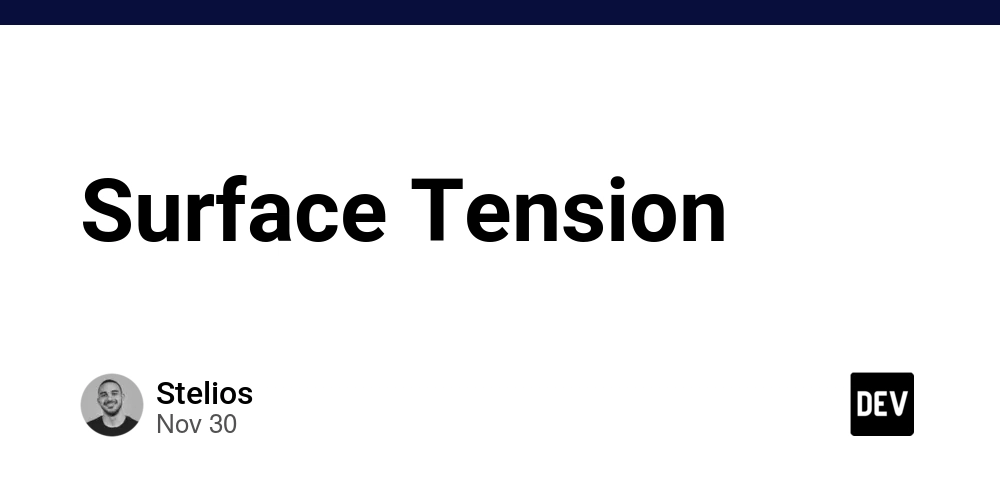Originally published on Hashnode
The Trust Problem in AI Code Generation
As developers, we’ve all been there. You ask an AI tool to generate some code, it spits out something that looks reasonable, and then… it breaks in production. Or worse, it fails silently, introducing subtle bugs that take hours to track down.
I’ve watched countless developers struggle with this fundamental trust issue. AI code generation tools are incredibly powerful, but they often feel like a black box. You get code, but you don’t get confidence. You get speed, but you sacrifice reliability.
After months of experiencing this frustration firsthand, I realized something crucial: the problem isn’t that AI makes mistakes—it’s that we don’t have the right tools to catch and prevent those mistakes.
Why Reliability Matters More Than Ever
In 2025, AI-generated code is becoming ubiquitous. We’re not just using it for quick prototypes anymore—it’s becoming part of critical business logic, infrastructure code, and systems that thousands of users depend on.
But here’s the paradox: as AI gets better at writing code, the stakes for when it gets things wrong keep getting higher.
I started thinking about what reliability actually means in the context of AI development tools:
- Predictable behavior: The tool should work consistently across different scenarios
- Error detection: When something goes wrong, you should know immediately
- Contextual awareness: The AI should understand your project’s specific patterns and constraints
- Incremental improvement: The tool should learn from your feedback and get better over time
Traditional AI code generators optimize for speed and capability, but they often miss these reliability fundamentals.
Introducing Cognix: AI Development Assistant Built for Trust
That’s why I started building Cognix – an AI-powered CLI assistant designed from the ground up with reliability as the core principle.
Cognix isn’t just another code generation tool. It’s a development partner that:
🧠 Remembers Your Context
Unlike stateless AI tools, Cognix builds a persistent memory of your project. It learns your coding patterns, understands your architecture decisions, and adapts to your team’s conventions.
🔍 Validates Before Suggesting
Every code suggestion goes through multiple validation layers – syntax checking, pattern matching against your existing codebase, and dependency verification.
🤝 Learns From Your Feedback
When you correct Cognix or reject a suggestion, it doesn’t forget. This feedback loops back to improve future suggestions specifically for your project.
⚡ Stays Out of Your Way
Built as a lightweight CLI, Cognix integrates seamlessly into your existing workflow without forcing you to change your development environment.
The Technical Approach: How We’re Solving Trust
Building a reliable AI development tool requires rethinking the traditional approach. Here’s how Cognix addresses the core reliability challenges:
Memory Architecture
Instead of treating each interaction as isolated, Cognix maintains a persistent context layer that builds up understanding over time. This includes:
- Project structure mapping
- Code pattern recognition
- Error pattern learning
- User preference modeling
Multi-Layer Validation
Before any code reaches you, it passes through:
- Syntax validation for immediate error catching
- Pattern matching against your existing codebase
- Dependency checking to prevent integration issues
- Style consistency enforcement based on your project’s patterns
Feedback Loop Integration
Every interaction with Cognix contributes to a learning cycle:
- Accepted suggestions reinforce successful patterns
- Rejected suggestions train negative examples
- User corrections create specific improvement targets
- Error reports feed back into validation improvements
Incremental Reliability
Rather than trying to be perfect from day one, Cognix is designed to get more reliable over time as it learns your specific context and requirements.
What’s Next: Building in Public
I’m building Cognix in public because I believe the best developer tools are built with developers, not just for them.
Over the next few weeks, you’ll see regular updates on:
- Technical deep dives into the reliability architecture
- Development progress with real examples and demos
- Design decisions and the reasoning behind them
- Early access opportunities for community feedback
I’m particularly interested in connecting with developers who:
- Have been burned by unreliable AI tools before
- Work on projects where code reliability is critical
- Are interested in the intersection of AI and developer experience
- Want to help shape the future of AI development tools
Join the Journey
Building reliable AI tools is hard, but it’s also incredibly important. As AI becomes more integrated into our development workflows, we need tools that enhance our capabilities without sacrificing the reliability and trust that great software requires.
If you’re interested in following along or contributing to this journey:
- Follow my progress here on this blog
- Connect with me on GitHub @cognix-dev
- Share your experiences with AI development tools – what works, what doesn’t, and what you wish existed
The future of AI-powered development isn’t just about generating more code faster. It’s about generating better code that developers can trust. Let’s build that future together.
💬 What do you think about the future of AI-powered developer tools? Share your thoughts in the comments!
🔗 Follow the journey: Coming to PyPI on September 4th, 2025



